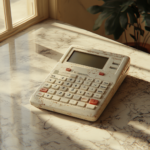Music is a universal language, and chords are its essential vocabulary. Among the diverse and rich chord structures in music, the bm/a chord stands out for its unique tonal quality. This article by Market Blick dives deep into the bm/a chord, exploring its structure, how to play it, its applications in music, and how it enriches musical compositions.
What is the Bm/A Chord?
The bm/a chord is a variation of the standard B minor chord with an added bass note of A. This chord can be considered a slash chord, where the note after the slash (A) is the bass note that should be played beneath the main chord (Bm). Essentially, this structure adds depth and complexity to the standard B minor sound, making it more versatile for various musical contexts.
Structure and Components of the Bm/A Chord
The standard B minor chord consists of the notes B, D, and F#. By adding an A note as the bass, the bm/a chord transforms into a more intricate harmonic structure. The chord’s composition is:
- Root: B
- Minor Third: D
- Perfect Fifth: F#
- Bass Note: A
This combination results in a chord that merges the melancholy tone of B minor with the grounding effect of the A bass note.
How to Play the Bm/A Chord on Guitar
Playing the bm/a chord on the guitar requires modifying the standard B minor chord shape to incorporate the A bass note. Here is a step-by-step guide:
- Place your index finger across the second fret, barring from the A string (5th) down to the high E string (1st).
- Position your middle finger on the B string (2nd) at the third fret.
- Place your ring finger on the D string (4th) at the fourth fret.
- Play the A string open to introduce the A bass note.
This configuration allows the A note to resonate as the bass, giving the bm/a chord its signature sound.
Variations and Voicings of the Bm/A Chord
The bm/a chord can be played in various ways depending on the instrument and the desired sound. Some alternative voicings include:
- Piano: Play B, D, F# with the right hand and A with the left hand.
- Alternate Guitar Shape: Use open positions or barre chords to create a softer or fuller sound.
- Inversions: Experiment with different note orders to emphasize certain tonal qualities.
Musical Context and Usage of the Bm/A Chord
The bm/a chord is commonly used in genres such as pop, rock, jazz, and acoustic music. Its moody yet stable tone makes it ideal for transitions between minor and major chords. It often appears in:
- Chord progressions that require a subtle bass movement.
- Bridges and pre-choruses to build tension.
- Acoustic ballads for emotional depth.
For example, in a progression like Bm – Bm/A – G – D, the descending bass line creates a smooth and emotive transition.
The Emotional Impact of the Bm/A Chord
The bm/a chord offers a profound emotional layer to music. By grounding the minor tonality of Bm with the A bass note, it introduces a sense of longing and movement. This characteristic makes it a favorite among songwriters looking to evoke introspection or melancholy in their music.
Common Songs Featuring the Bm/A Chord
Several artists and bands have used the bm/a chord to enhance their music. Though it may not always be explicitly labeled, similar slash chords with added bass notes are prevalent in:
- Folk and acoustic music for a soft, flowing progression.
- Pop ballads that require emotional depth.
- Jazz compositions for harmonic complexity.
Tips for Practicing the Bm/A Chord
Mastering the bm/a chord takes practice, especially for beginners. Here are some practice tips:
- Start Slowly: Ensure clarity in each note before increasing speed.
- Use a Metronome: Maintain rhythm while transitioning in progressions.
- Incorporate into Songs: Practice the chord within actual music to understand its feel.
Why the Bm/A Chord Matters in Music Composition
The bm/a chord is more than just a variation; it’s a tool that composers and musicians use to add nuance and depth. By understanding and incorporating this chord, musicians can expand their harmonic vocabulary and create richer, more dynamic music.
At Market Blick, we recognize the value of exploring such musical concepts to enhance creative expression. The bm/a chord exemplifies how slight variations can lead to significant emotional and harmonic impacts in music.
Conclusion
The bm/a chord is a versatile and emotionally resonant chord that offers musicians an avenue to enrich their compositions. Whether you’re a guitarist, pianist, or composer, incorporating this chord into your music can add layers of complexity and feeling. For more insights into musical concepts and innovations, stay tuned to Market Blick.







